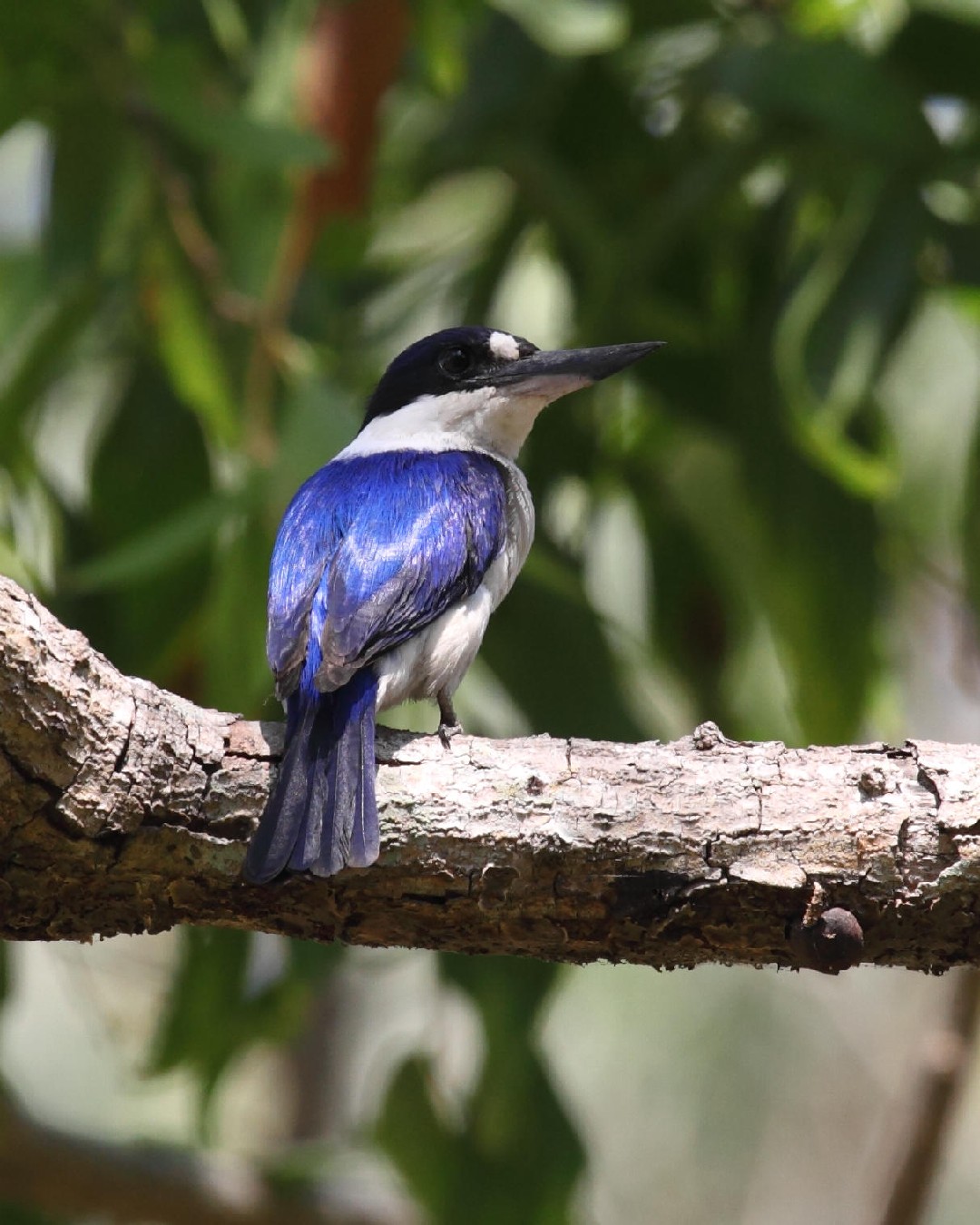Forest Kingfisher
A species of Australo-pacific Kingfishers Scientific name : Todiramphus macleayii Genus : Australo-pacific Kingfishers
Forest Kingfisher, A species of Australo-pacific Kingfishers
Botanical name: Todiramphus macleayii
Genus: Australo-pacific Kingfishers
Content
Description General Info
 Photo By http://www.comebirdwatching.blogspot.com/ , used under CC-BY-SA-3.0 /Cropped and compressed from original
Photo By http://www.comebirdwatching.blogspot.com/ , used under CC-BY-SA-3.0 /Cropped and compressed from original Description
The forest kingfisher measures 21.5–25.5 cm (8.5–10.0 in) in length and the male weighs 32–43 g (1.1–1.5 oz) while the female weighs 29–44 g (1.0–1.6 oz). It has blue wings, head and tail with white breast, abdomen and nape. It has a white patch in front of the eyes and a black band stretching from the bill, through the eyes to the ear coverts. A white patch is visible on the wings in flight. The female is distinguished by a blue rather than white nape. The iris is dark brown and the legs and feet dark grey. Immature birds are duller with a blackish crown. The call is a shrill t-reek, repeated regularly, most often in the early morning. 
Size
20 cm
Nest Placement
Tree
Feeding Habits
Forest Kingfisher primarily consumes invertebrates and small vertebrates, employing a 'sally-pouncing' method from perches to capture prey. Unique behaviors include killing prey by striking it against branches.
Habitat
Forest Kingfisher thrives in tropical and subtropical environments, favoring habitats like lowland forests, mangroves, and Melaleuca swamplands. This species adapts well to forest edges, monsoon forests, eucalypt woodlands, and is also found in human-modified landscapes including farmlands and suburban areas. It mainly occurs below 200 meters altitude, although it can reach up to 1700 meters in some northern regions.
Dite type
Insectivorous
General Info
Feeding Habits
Bird food type
Distribution Area
The forest kingfisher is native to Indonesia, Papua New Guinea, the Solomon Islands, and Australia, where it is found on or near the Australian coastline from Port Stephens in New South Wales northwards to Cape York and westwards across the Top End. It is a summer visitor in the southern parts of its range in New South Wales and southern Queensland; elsewhere it is resident all year round. As its name suggests, it inhabits subtropical or tropical dry forest, subtropical or tropical moist lowland forest, and subtropical or tropical mangrove forest and Melaleuca swampland. 
Species Status
Although the population trend of the forest kingfisher is decreasing, it is classed as a species of least concern on the IUCN Red List. 

 Photo By http://www.comebirdwatching.blogspot.com/ , used under CC-BY-SA-3.0 /Cropped and compressed from original
Photo By http://www.comebirdwatching.blogspot.com/ , used under CC-BY-SA-3.0 /Cropped and compressed from original